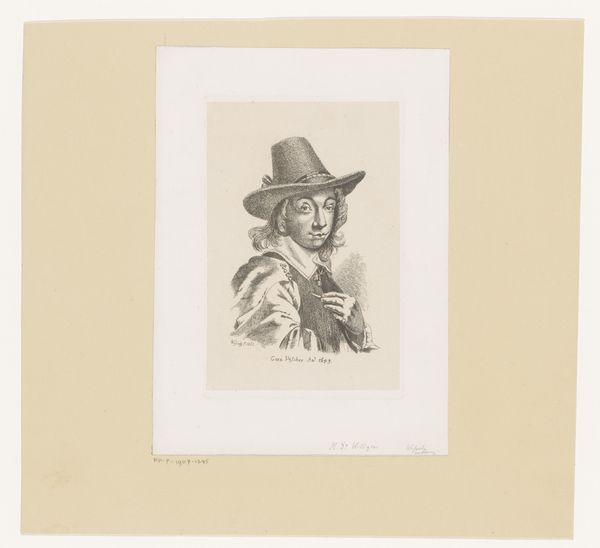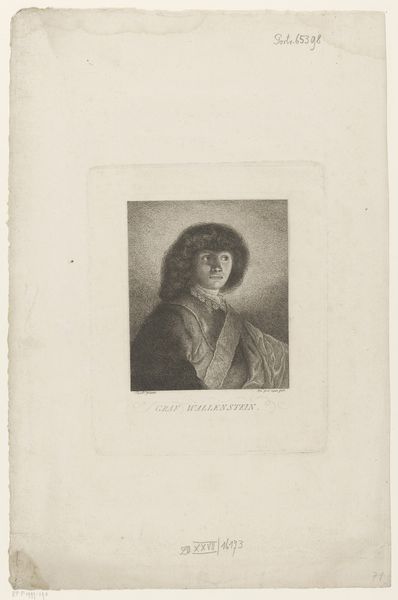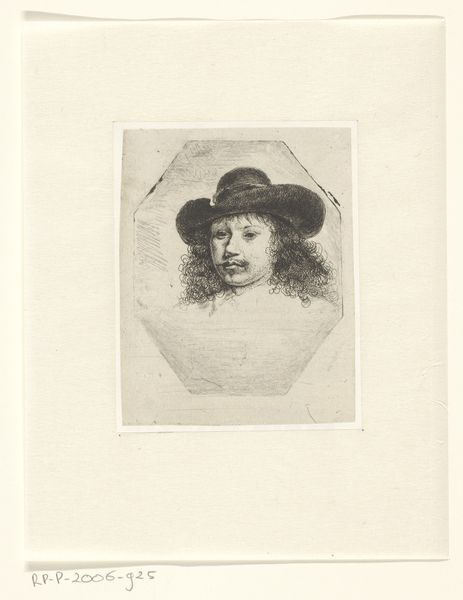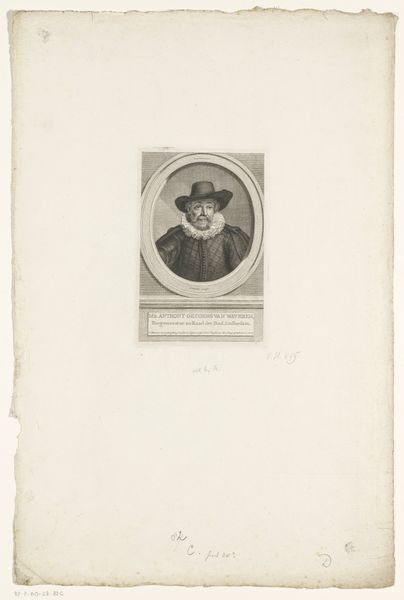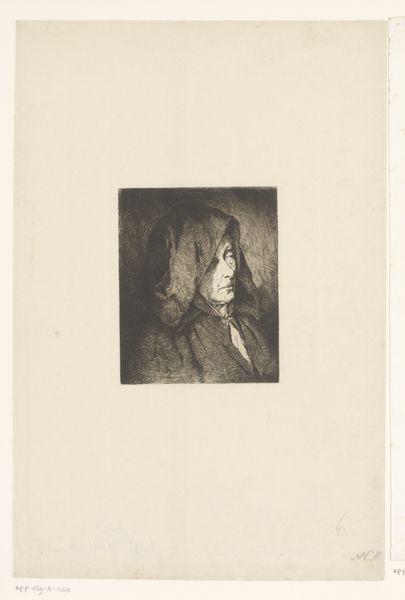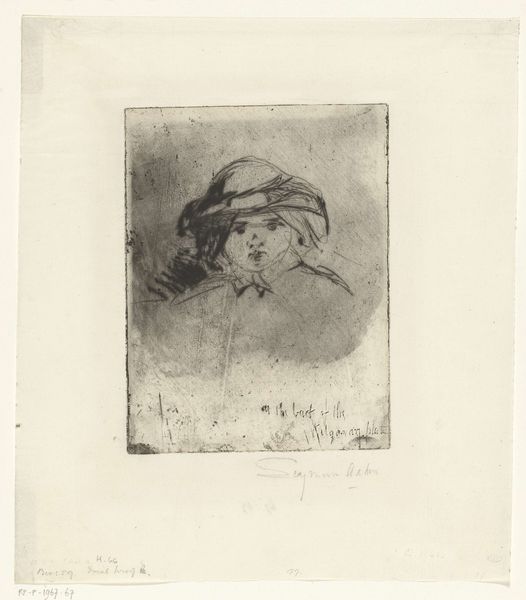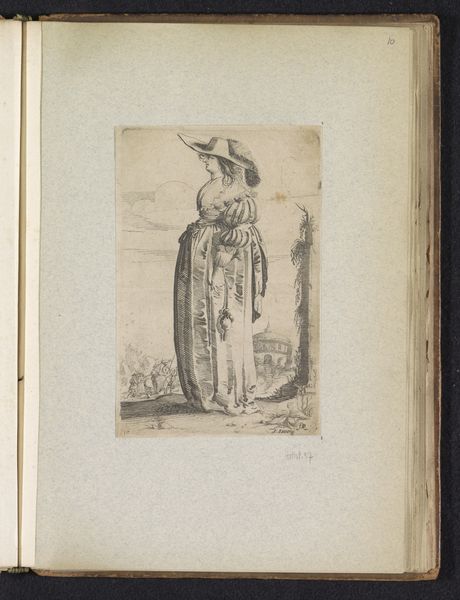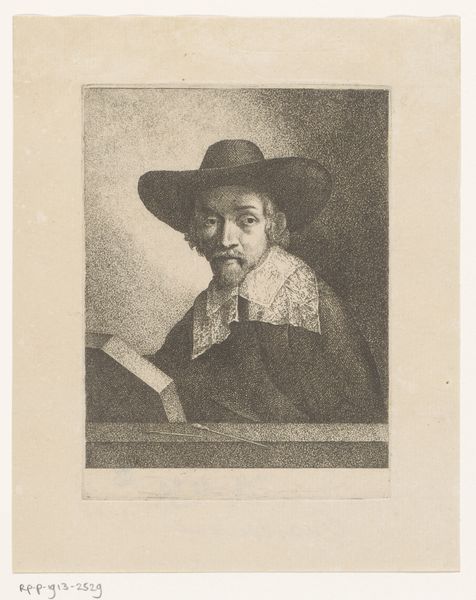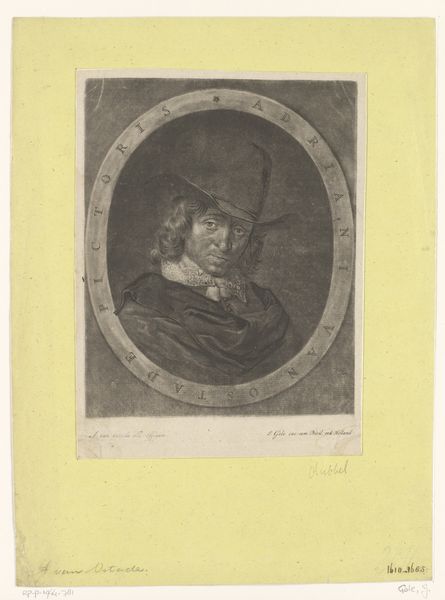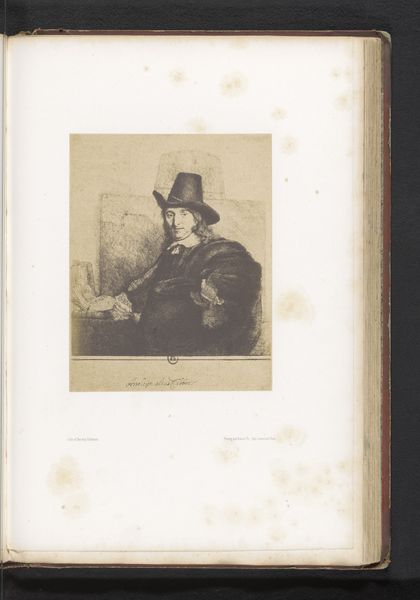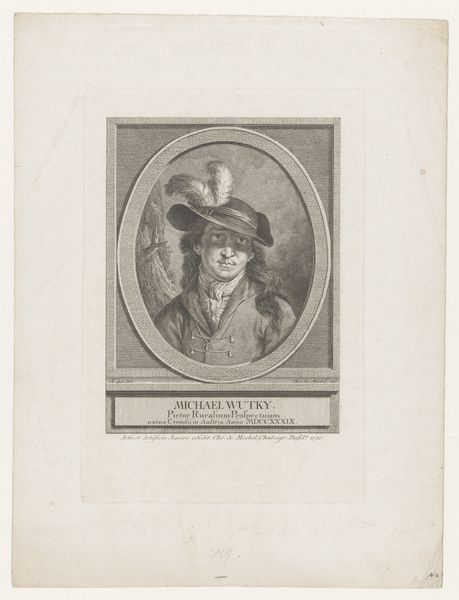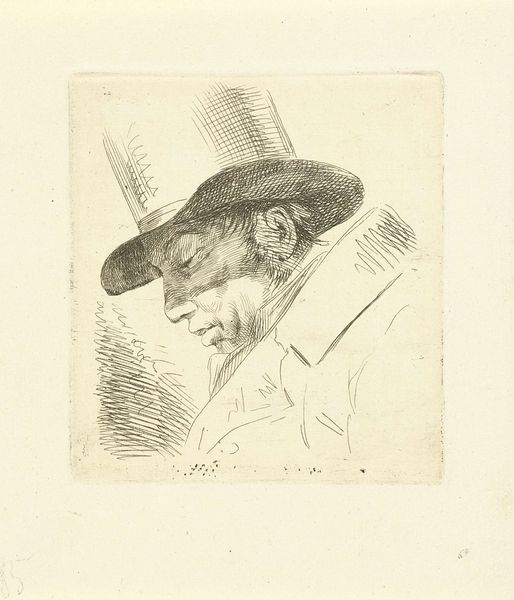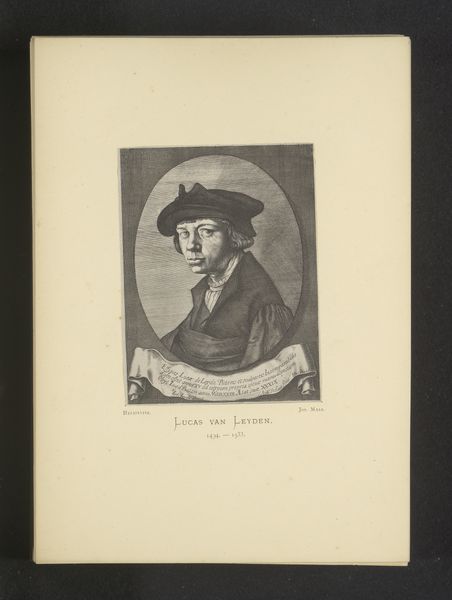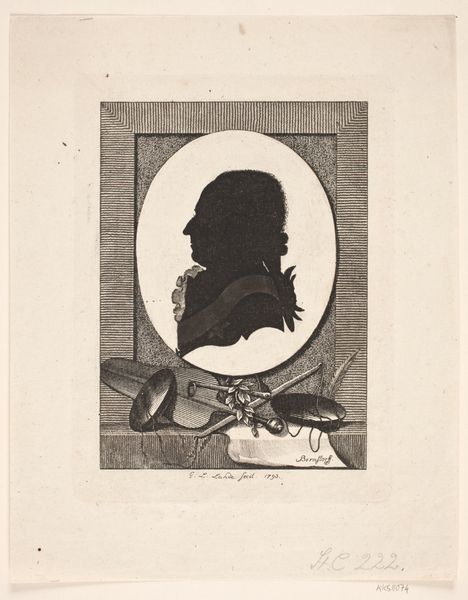
Dimensions: height 228 mm, width 173 mm, height 350 mm, width 262 mm
Copyright: Rijks Museum: Open Domain
Curator: The atmosphere is instantly striking. There's a solemn intensity that I find immediately compelling. Editor: Indeed. What we’re viewing is Jacob Gole’s "Portret van Adriaen van Ostade," likely created between 1670 and 1853, now residing here at the Rijksmuseum. The artwork utilizes engraving as its medium, a common technique from the Dutch Golden Age. Curator: And one that is perfect for portraits, don’t you think? Notice how the linear precision afforded by engraving allows for that remarkable detailing in his facial expression, the very texture of his skin, and his garments. You almost want to touch the image. Editor: Ostade’s figure appears framed in this portrait. In terms of symbols, the oval itself might function to freeze him, and that may have a specific commemorative intention here. Furthermore, a certain tradition dictated how the collar relates to social rank, but also humility—a constant tug-of-war! Curator: What strikes me is the light, though. Look how Gole contrasts the darkness of Ostade’s attire, particularly that magnificent hat, against the light falling on his face. It's a classic Baroque chiaroscuro, drawing your eye directly to the subject’s face. It lends him a somewhat mysterious air, as if he has seen many things, both joyful and despairing. Editor: I am drawn back to this idea of duality – yes, darkness versus light – but that hat is important in the reading as well, a signifier for bohemian identity. Ostade, if you will recall, excelled at peasant scenes: so it could also imply he identified and integrated into a communal life that many others would shun. Curator: Perhaps so! One reading could also suggest the darkness encroaching on Ostade himself; shadows may allude to a melancholy mood in the latter years of his artistic activity. His identity is enmeshed in his physical likeness here! Editor: And what that means, of course, depends upon our own perspective in viewing Gole's engraving. Curator: Yes! The beauty of studying forms is their tendency toward open meaning, after all! Editor: Right—the symbols shift, as do their meanings!
Comments
No comments
Be the first to comment and join the conversation on the ultimate creative platform.
